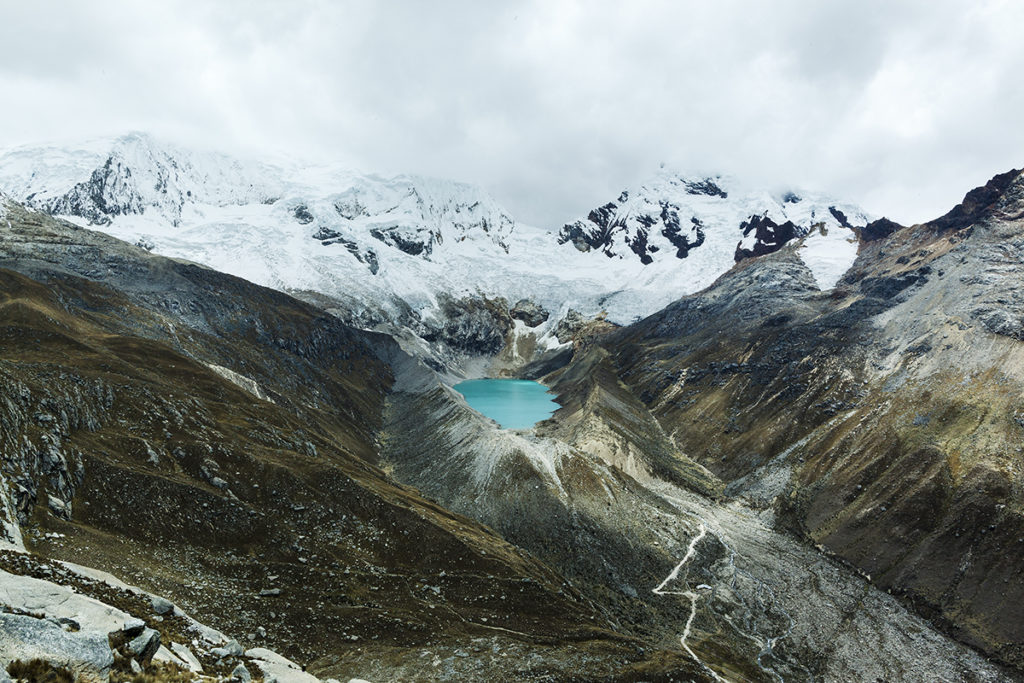Text by Noah Walker Crawford Images by Alexander Luna –-– A dark cloud
hangs over Lake Palcacocha. At 4500 m above sea level in the Peruvian
Andes, the nights are full of biting winds. Jesús lies guard over
Palcacocha. Located in the centre of the Cordillera Blanca mountain
range, the lake has grown exponentially in recent years as a result of
glacier retreat. If a large avalanche falls into Palcacocha from the
glaciers above, the lake could overflow and devastate the city of Huaraz
below. Over 50,000 people live in the flood hazard zone, an area that
was destroyed when the lake’s natural moraine dam broke for the first
time in 1941. Between life and death stands Jesús with a radio and a
satellite telephone. Every two hours, day and night, Jesús radios the
authorities in Huaraz with a status update. Base one to base two. Here
the report for seven p.m. Weather: overcast. Wind: normal. Rain: none.
Snow: none. Equipment: 8 pipes operating. Water level: rising.
Avalanches: minimum. Waves: moderate. Mudslides: none. Everything is
operating, no news, base two. Please respond. For now, the lake is safe.
Eight of twelve pipes have been activated to pump out water. The water
is not only a threat, but also a resource: it provides over 150,000
people in Huaraz with tap water and supplies the surrounding rural areas
with water for drinking and irrigation. As Jesús keeps watch over the
lake, he seeks to find a balance between reducing the risk of flooding
and keeping enough water stored in the lake to quench the valley’s
thirst. But for Jesús and his colleagues who come from rural communities
downstream, the lake is more than a threat and resource: it is also a
being that requires mutual respect. Every two weeks, an 81-year-old man
named Pedro pays tribute to Palcacocha. Pedro is the head of the lake
guardians. The beings that make up Palcacocha speak to him in his dreams
and ask him for payments. If he performs the ceremonies on time, the
lake remains calm. The multiple and entangled meanings of Palcacocha
arise out of diverse knowledges and practices. In a contemporary context
marked by rapid glacier retreat and environmental change, water has
become a central issue of concern in the Peruvian Andes for both rural
and urban populations. Following the case of Lake Palcacocha, this paper
explores how attempts to define water in particular ways are often
linked to claims over how to value life, landscapes and
human-environment relations. I will show that water typologies may
conflict, but can also coexist despite their contradictions. Water
remains ever elusive as it shapes life in the Peruvian Andes.
Life and death at Lake Palcacocha: Environmental uncertainty in the Peruvian Andes // Part I

